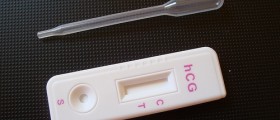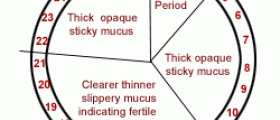
Monitoring the structure and color of cervical mucus is part of the wider routine of fertility charting. Fertility charting, also known as charting to conceive, is a natural method many women use to keep track of their ovulation, and the days prior to ovulation. It includes measuring one's basal body temperature, and recording any other natural ovulation symptoms a woman has tender breasts, ovulation pain, or even slight abdominal bloating are some examples. Cervical mucus can also stand alone as a way to find out more about a woman's menstrual cycle.
Depending on the time of the month, cervical mucus contains more or less water, and other "ingredients" like protein and glucose. This is reflected in the appearance of the mucus, which can be thin or thick, and stretchy or cream cheese like. You collect a mucus "sample" by inserting two fingers. Then what? Let's begin by examining what cervical mucus normally looks like during ovulation. A thin, stretchy, slippery structure indicates ovulation. The color of cervical mucus during ovulation is either transparent, like a raw egg white, or white. During this point in your cycle, cervical mucus contains a high percentage of fluid. This kind of cervical mucus provides an ideal environment for sperm to reach an egg, and to survive for the longest possible time. After your ovulation is finished, your cervical mucus will thicken and change in color. If you notice a clay-like, non-stretchy mucus that is totally white in color and not see-through in any way, you can be fairly certain that this is post-ovulatory cervical mucus.
At the same time, you might feel that your vagina is drier than during ovulation. If you conceived, you might even notice implantation bleeding. Early pregnancy cervical mucus is so similar to the cervical mucus you would normally expel during the luteal phase that monitoring the changes can't really be used as a reliable way to determine pregnancy. Some women do report that they had more cervical mucus than before during early pregnancy, but this is not the same for everyone. What can you tell us about your experiences with this? Are you able to tell where in your cycle you are, just by looking at your cervical mucus? How do you do it?















Your thoughts on this
Loading...